Overall, COP 30 was one of the most overwhelming but beneficial experiences of my life. Going into the conference, you know there will be many countries represented, but you never truly grasp how influential this conference is to so many areas and people around the world. Each day, I was constantly meeting someone new who had a completely different background but was there for the same goal. Everyone was there to support the climate in one way or another, but many countries had interesting ways of showing it. One of the key lessons I learned from COP is how important it is to talk to people with different perspectives. I was given the opportunity to attend an ocean panel about how to address ocean acidification. During this panel, there was a variety of speakers from different backgrounds who brought such unique perspectives to the conversation. For example, I was able to hear viewpoints from policy, finance, research, and local community representatives all focused on the same topic. Hearing these perspectives enhanced my understanding and made me realize that many of the discussions that happen at COP 30 involve countless considerations.
This leads to the next key lesson I learned from COP: how important language is in the Paris Agreement. I attended a panel about gender and climate change where a document was being reviewed, and delegates from different countries could offer feedback on the revisions. Throughout this discussion, delegates constantly recommended changes they felt were necessary. At first, I had a hard time understanding how such a small change—like a comma—could make a significant difference to a policy or document, until I heard the explanations from the delegates. For example, in the original document, one of the phrases used was “local indigenous communities.” A delegate requested that there be a comma between “local” and “indigenous” because, without it, the language implied that the agenda item would only protect indigenous communities that are local, and not all indigenous communities. This is just one example of the many corrections and small changes in policy language that can have a major impact, and it was something I learned during this discussion.
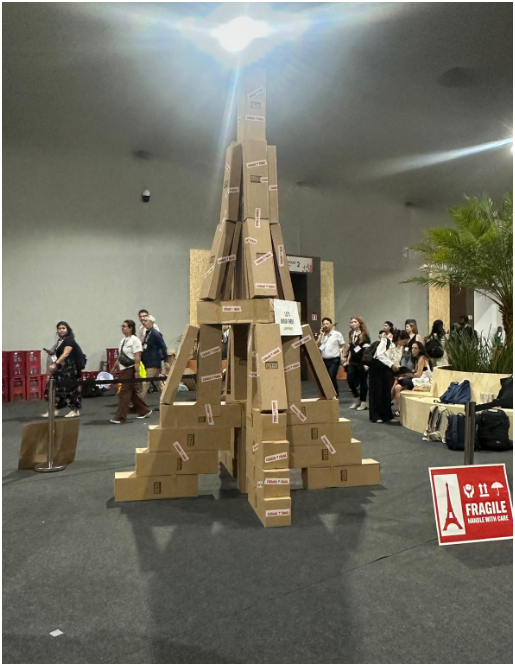 Overall, based on the key lessons I learned from COP 30, I am very excited to apply them to my personal and professional life. One of the ways I am going to apply these lessons is in the remainder of my education. As an engineering major, it can be very easy to get stuck in a technical mindset and not focus on other perspectives when implementing solutions. Based on what I learned from COP 30, I hope to change that by bringing a more holistic mindset to my professional career—looking at solutions not just from a technical standpoint, but also considering policy, community impact, and finances. Another way I am going to apply what I learned about critical language is in my future efforts to make a positive contribution to climate action. I will be more careful and intentional with the language I use and how I present my knowledge to others. Overall, COP 30 opened a variety of doors and perspectives for me that I look forward to applying in both my personal and professional life.
Overall, based on the key lessons I learned from COP 30, I am very excited to apply them to my personal and professional life. One of the ways I am going to apply these lessons is in the remainder of my education. As an engineering major, it can be very easy to get stuck in a technical mindset and not focus on other perspectives when implementing solutions. Based on what I learned from COP 30, I hope to change that by bringing a more holistic mindset to my professional career—looking at solutions not just from a technical standpoint, but also considering policy, community impact, and finances. Another way I am going to apply what I learned about critical language is in my future efforts to make a positive contribution to climate action. I will be more careful and intentional with the language I use and how I present my knowledge to others. Overall, COP 30 opened a variety of doors and perspectives for me that I look forward to applying in both my personal and professional life.
Sanya Sharma is a senior environmental engineering major.
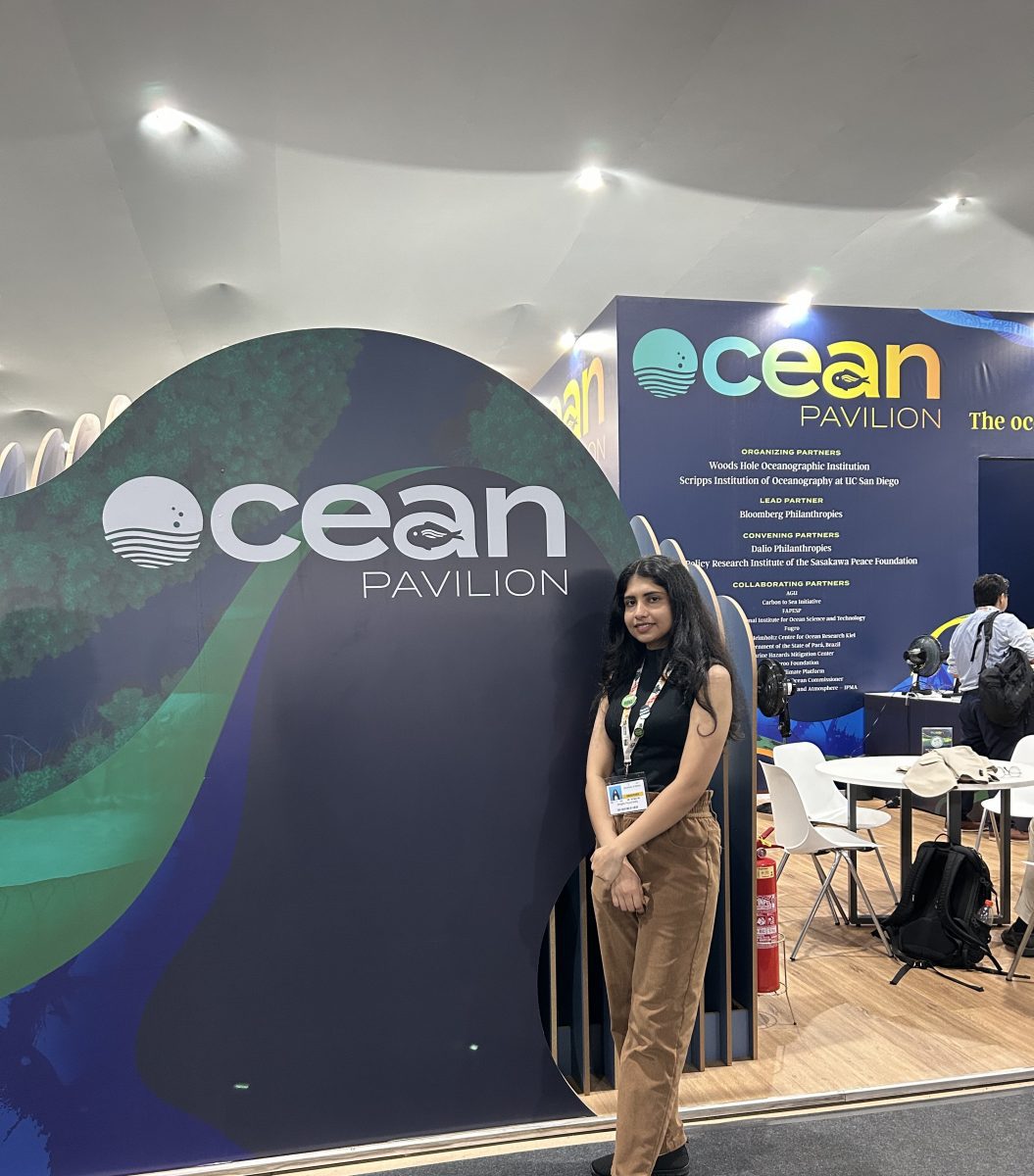 For the first time, there was a full Ocean Pavilion, not a tiny booth hidden in a corner, but a central, vibrant space filled with conversations that finally recognized the ocean as a climate powerhouse. I sat in panels where local communities, policymakers, and scientists spoke side by side, and I felt something shift. I hope the ocean is no longer an afterthought.
For the first time, there was a full Ocean Pavilion, not a tiny booth hidden in a corner, but a central, vibrant space filled with conversations that finally recognized the ocean as a climate powerhouse. I sat in panels where local communities, policymakers, and scientists spoke side by side, and I felt something shift. I hope the ocean is no longer an afterthought.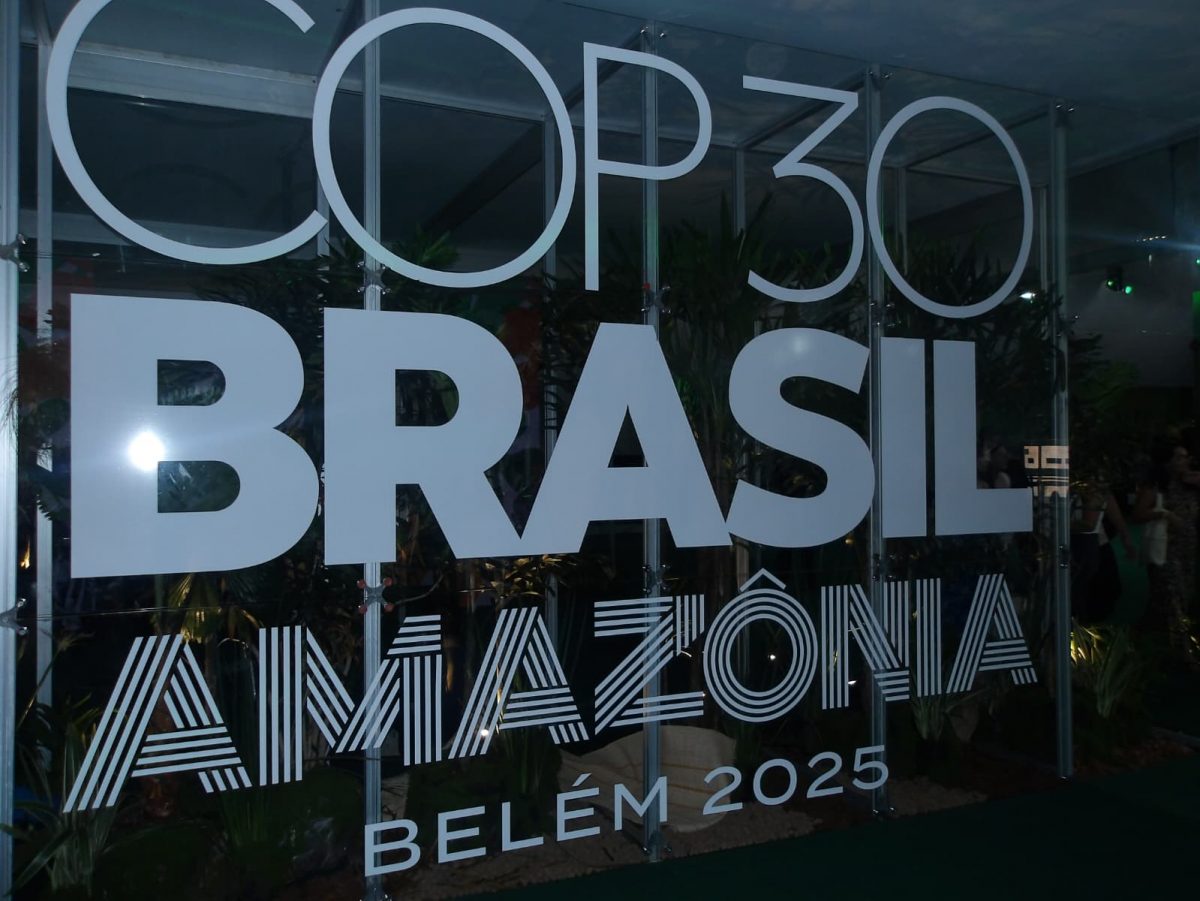 The theme of this year’s COP is implementation, turning ambition into tangible realities. It is both a necessity for addressing the climate crisis and a possible personal philosophy that I believe all students should incorporate, especially if they have a potential solution for a better future. The reason COP needs to choose this topic is that we are seeing a slowdown (and often a regression) in the significant progress made during the Paris Agreement of 2015. The Tropical Forests Forever Fund (TFFF) is one of many ambitious financial mechanisms that aim to compensate countries for restoration and conservation efforts. There are a plethora of factors, including land ownership, land use, historical conditioning, and more, that can create complex variables in the conversation. How do you ask 83+ countries to agree on a joint solution? It is a question that is continually revisited. Not to mention incorporating the perspectives of indigenous communities who have harmoniously lived amongst the many vulnerable lands that would benefit from these conservation efforts, but aren’t often represented in policy-making.
The theme of this year’s COP is implementation, turning ambition into tangible realities. It is both a necessity for addressing the climate crisis and a possible personal philosophy that I believe all students should incorporate, especially if they have a potential solution for a better future. The reason COP needs to choose this topic is that we are seeing a slowdown (and often a regression) in the significant progress made during the Paris Agreement of 2015. The Tropical Forests Forever Fund (TFFF) is one of many ambitious financial mechanisms that aim to compensate countries for restoration and conservation efforts. There are a plethora of factors, including land ownership, land use, historical conditioning, and more, that can create complex variables in the conversation. How do you ask 83+ countries to agree on a joint solution? It is a question that is continually revisited. Not to mention incorporating the perspectives of indigenous communities who have harmoniously lived amongst the many vulnerable lands that would benefit from these conservation efforts, but aren’t often represented in policy-making.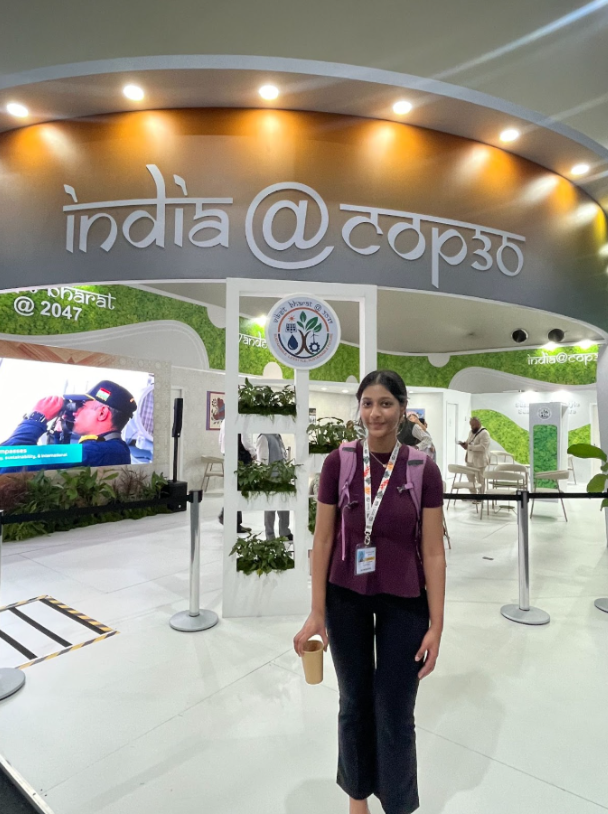
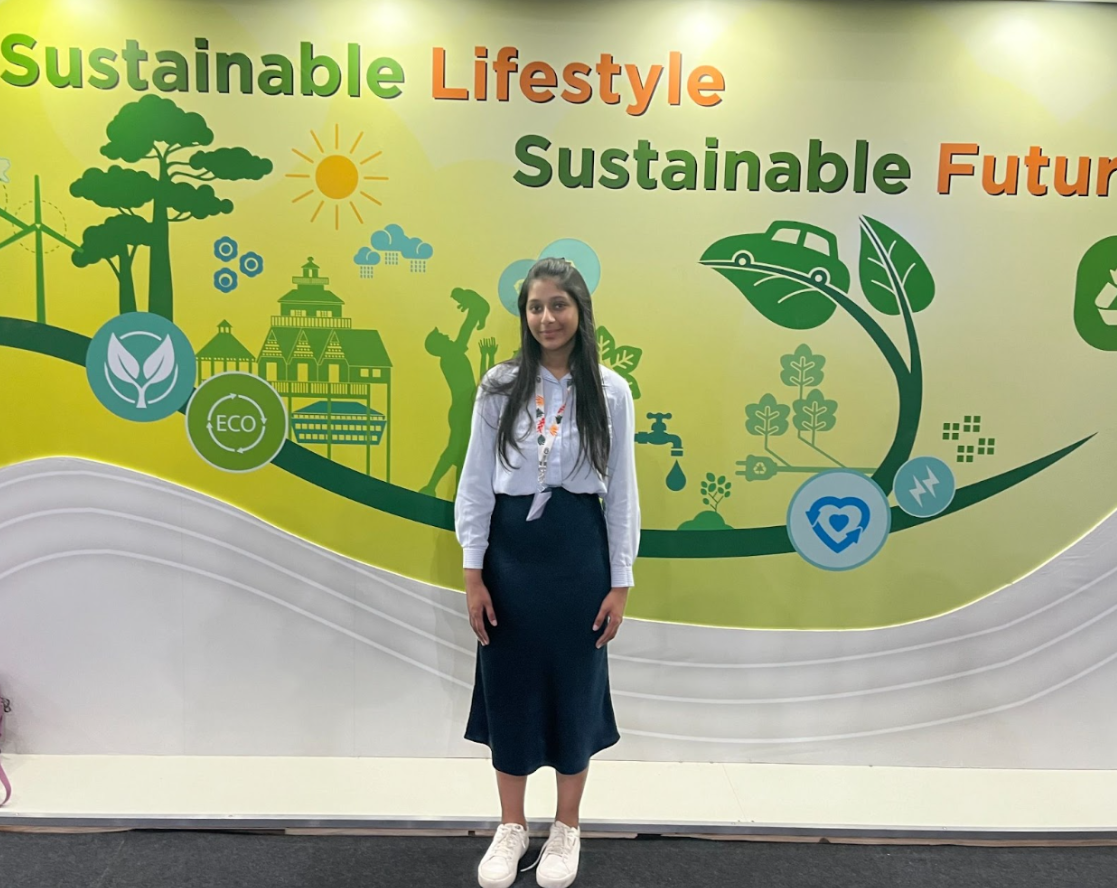 Understanding how federal and multilateral institutions (such as the U.S. Department of the Treasury, Securities and Exchange Commission, Federal Reserve, World Bank, and International Monetary Fund) function and how to coordinate across them is an important yet often overlooked skill.
Understanding how federal and multilateral institutions (such as the U.S. Department of the Treasury, Securities and Exchange Commission, Federal Reserve, World Bank, and International Monetary Fund) function and how to coordinate across them is an important yet often overlooked skill.  My first day at the conference was spent in the Green Zone. At the Conference of the Parties (COP), the Green Zone is largely dedicated to demonstrating tangible climate solutions and expanding public awareness of environmental solutions. The Green Zone is open to all, and features pavilions showcasing Brazilian governmental agencies, non-governmental organizations, and private companies. Additionally, the Green Zone promoted national and Amazônia culture, featuring indigenous vendors, local cuisine, and art. Furthermore, an objective of the event was to raise awareness and engage the population of the host city, Belém, with the UN’s climate agenda. I was able to visit a variety of pavilions, but the ones that interested me the most included a talk by the vice president of Brazil, Geraldo Alckmin, a COP and coffee: Oceans talk with Deloitte, and an exhibition by Be8 Energy. Be8 showcased a semi-truck powered by renewable biodiesel. Additionally, the Green Zone featured pavilions advocating for an end to the genocide in Palestine, as Israel’s invasion has devastated the natural environment of the region. Overall, the Green Zone provided me with an immersive experience that framed my perspective as I spent the rest of my week in the Green Zone.
My first day at the conference was spent in the Green Zone. At the Conference of the Parties (COP), the Green Zone is largely dedicated to demonstrating tangible climate solutions and expanding public awareness of environmental solutions. The Green Zone is open to all, and features pavilions showcasing Brazilian governmental agencies, non-governmental organizations, and private companies. Additionally, the Green Zone promoted national and Amazônia culture, featuring indigenous vendors, local cuisine, and art. Furthermore, an objective of the event was to raise awareness and engage the population of the host city, Belém, with the UN’s climate agenda. I was able to visit a variety of pavilions, but the ones that interested me the most included a talk by the vice president of Brazil, Geraldo Alckmin, a COP and coffee: Oceans talk with Deloitte, and an exhibition by Be8 Energy. Be8 showcased a semi-truck powered by renewable biodiesel. Additionally, the Green Zone featured pavilions advocating for an end to the genocide in Palestine, as Israel’s invasion has devastated the natural environment of the region. Overall, the Green Zone provided me with an immersive experience that framed my perspective as I spent the rest of my week in the Green Zone.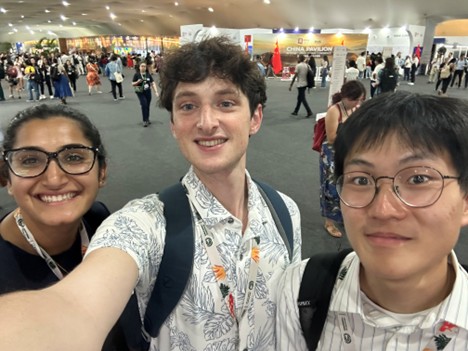
 There have been several discussions and plans to implement programs for countries to provide support and aid for those that are disproportionately impacted. Developed countries have even, to a certain extent, owned up to some responsibility for the vast damage they have caused to our environment. However, plans and discussions do not mean execution by any means. We simply do not have the luxury of ten more years until our climate rises past 1.5 degrees Celsius and truly, we have achieved irreparable damage to the environment.
There have been several discussions and plans to implement programs for countries to provide support and aid for those that are disproportionately impacted. Developed countries have even, to a certain extent, owned up to some responsibility for the vast damage they have caused to our environment. However, plans and discussions do not mean execution by any means. We simply do not have the luxury of ten more years until our climate rises past 1.5 degrees Celsius and truly, we have achieved irreparable damage to the environment. My first day at COP was oddly both what I was expecting and equally overwhelming. Before attending COP30, I had done research on previous COPs and was familiar with COP possessing a slow mediation process where countries often do not reach a “satisfying” conclusion. It was a known fact that different nations contain different perspectives, which consequently makes negotiation extremely difficult. There are notable deep-rooted historical divides and groupings of cultures, and while I was aware of this, seeing these relationships firsthand was a culture shock compared to social and racial groupings I had witnessed in America on a national level. One of the first events I attended at COP was the COP Presidency Consultation on Mountains and Climate Change. This meeting was the final consultation that was established to draw a conclusion on how to move forward in addressing climate issues in mountain regions. The Mountain Group, represented by a delegate from Kyrgyzstan as well as Nepal and Georgia, were the main drivers in proposing annual discussions on mountains and climate change. These groups also wanted to instate climate change in mountainous regions as an agenda item. The European Union (EU) countered this request by claiming that their region also has mountains and feels an annual conversation, as well as having this topic as an agenda item, is unnecessary. They stated that this workstream seemed counterproductive and it was preferable to have a streamlined subsidiary. Japan also agreed with this rhetoric and claimed that despite having mountain ranges in their region, they also aligned with the EU. I found it interesting that despite mountain regions collectively forming negotiations and counter-responses, the regions seemed to separate into groups: lower-income countries and economic and political powerhouses.
My first day at COP was oddly both what I was expecting and equally overwhelming. Before attending COP30, I had done research on previous COPs and was familiar with COP possessing a slow mediation process where countries often do not reach a “satisfying” conclusion. It was a known fact that different nations contain different perspectives, which consequently makes negotiation extremely difficult. There are notable deep-rooted historical divides and groupings of cultures, and while I was aware of this, seeing these relationships firsthand was a culture shock compared to social and racial groupings I had witnessed in America on a national level. One of the first events I attended at COP was the COP Presidency Consultation on Mountains and Climate Change. This meeting was the final consultation that was established to draw a conclusion on how to move forward in addressing climate issues in mountain regions. The Mountain Group, represented by a delegate from Kyrgyzstan as well as Nepal and Georgia, were the main drivers in proposing annual discussions on mountains and climate change. These groups also wanted to instate climate change in mountainous regions as an agenda item. The European Union (EU) countered this request by claiming that their region also has mountains and feels an annual conversation, as well as having this topic as an agenda item, is unnecessary. They stated that this workstream seemed counterproductive and it was preferable to have a streamlined subsidiary. Japan also agreed with this rhetoric and claimed that despite having mountain ranges in their region, they also aligned with the EU. I found it interesting that despite mountain regions collectively forming negotiations and counter-responses, the regions seemed to separate into groups: lower-income countries and economic and political powerhouses. Later on, I also attended the COP Presidency Consultation on the Special Needs and Circumstances of Africa, which I found especially insightful in terms of highlighting the dynamics between groups of countries. Colombia began the discussion by highlighting the regional bias of focusing on Africa and how this focus delegitimizes COP concerns. Pakistan also agreed with Colombia’s point and added that developing countries shouldn’t “compete vulnerabilities,” because all developing countries should be spotlighted at COP—a term that was echoed throughout the conference. The African Group disagreed, emphasizing that their unique position as a region that contributed less than 4% to global emissions yet struggles the most with climate change consequences raises a specific concern that needs to be addressed. Tanzania argued that this conference was “not a vulnerability contest” but rather a focused discussion on Africa utilizing “information already on the table.” South Africa reiterated the claim that Africa contributes the least to climate change but is subject to so many of its adverse effects, emphasizing that the region’s women, youth, and rural communities were most vulnerable. The South African delegate also stated that the country was already grappling with heightened food insecurity, noting that climate change caused a 34% decrease in food production on the continent. Zimbabwe, the Caribbean Community, and several other African countries emphasized that the Paris Agreement did not need to be rewritten, but rather implemented to provide attention to Africa.
Later on, I also attended the COP Presidency Consultation on the Special Needs and Circumstances of Africa, which I found especially insightful in terms of highlighting the dynamics between groups of countries. Colombia began the discussion by highlighting the regional bias of focusing on Africa and how this focus delegitimizes COP concerns. Pakistan also agreed with Colombia’s point and added that developing countries shouldn’t “compete vulnerabilities,” because all developing countries should be spotlighted at COP—a term that was echoed throughout the conference. The African Group disagreed, emphasizing that their unique position as a region that contributed less than 4% to global emissions yet struggles the most with climate change consequences raises a specific concern that needs to be addressed. Tanzania argued that this conference was “not a vulnerability contest” but rather a focused discussion on Africa utilizing “information already on the table.” South Africa reiterated the claim that Africa contributes the least to climate change but is subject to so many of its adverse effects, emphasizing that the region’s women, youth, and rural communities were most vulnerable. The South African delegate also stated that the country was already grappling with heightened food insecurity, noting that climate change caused a 34% decrease in food production on the continent. Zimbabwe, the Caribbean Community, and several other African countries emphasized that the Paris Agreement did not need to be rewritten, but rather implemented to provide attention to Africa. Latin America’s stance reflects a concern that elevating Africa as a distinct category could undermine their visibility. Africa may be marginalized or facing a climate crisis in a distinct way, but other countries seem to view the addressing of these issues as a threat to their region’s focus. Latin American countries share a culture and climate (as well as climate issues), which creates a solidarity based on history and culture. However, a shared solidarity can also isolate alternative regions as “others” who are a threat to their own climate focus, a dynamic that is likely emphasized within this COP negotiation.
Latin America’s stance reflects a concern that elevating Africa as a distinct category could undermine their visibility. Africa may be marginalized or facing a climate crisis in a distinct way, but other countries seem to view the addressing of these issues as a threat to their region’s focus. Latin American countries share a culture and climate (as well as climate issues), which creates a solidarity based on history and culture. However, a shared solidarity can also isolate alternative regions as “others” who are a threat to their own climate focus, a dynamic that is likely emphasized within this COP negotiation. What I found was a circle of tables, facing inward, with screens in the middle showing a policy document. One party leads the discussion and would hear out countries as world leaders decide the text, semantics, and phrasing of policy that will impact billions of lives. As I watched the parties work, I was struck by the push and pull of compromise, argument, and defiance. I listened as parties unanimously struck entire paragraphs of text while having unresolved conflict over the wording of a single sentence.
What I found was a circle of tables, facing inward, with screens in the middle showing a policy document. One party leads the discussion and would hear out countries as world leaders decide the text, semantics, and phrasing of policy that will impact billions of lives. As I watched the parties work, I was struck by the push and pull of compromise, argument, and defiance. I listened as parties unanimously struck entire paragraphs of text while having unresolved conflict over the wording of a single sentence. 
 I was able to attend a panel conduct by the Water for Climate Pavillion regarding NAPs and NDCS: Sectoral and Regional Insights. During this panel there was a variety of different panelists, such as Juanita Ariza Guzman (the Economic Commissioner for Latin America and the Caribbean of the United Nations (ECLAC),) Soraya Salcedo (the Deputy Director of International Cooperation of Colombia), and Paula Martinelli (Global Water Advocacy Officer for Wetlands International). These panelists all worked in a variety of fields, but with the same goal in mind: to preserve water in our world and to create a policy in support. However, there were a lot of perspectives and technical progress that I was unaware of. For example, I was able to talk to Paula Martinelli after the panel about her experience working in policy for water and other countries. She expressed the daily challenges she faces every day working in international affairs. She is constantly working with other countries to help them develop, to implement and/or improve their freshwater ecosystem. As much as you think countries would appreciate the support provided by an NGO, such as Wetland International, there is constant backlash that must be discussed. NGOs like Wetland International are doing their best to preserve water and support communities that are suffering from access to freshwater. But some countries only see the value of improving these issues if there is an economic benefit. In addition, as an advocacy officer in wetlands not only are you advocating for the community but also for the ecosystem.
I was able to attend a panel conduct by the Water for Climate Pavillion regarding NAPs and NDCS: Sectoral and Regional Insights. During this panel there was a variety of different panelists, such as Juanita Ariza Guzman (the Economic Commissioner for Latin America and the Caribbean of the United Nations (ECLAC),) Soraya Salcedo (the Deputy Director of International Cooperation of Colombia), and Paula Martinelli (Global Water Advocacy Officer for Wetlands International). These panelists all worked in a variety of fields, but with the same goal in mind: to preserve water in our world and to create a policy in support. However, there were a lot of perspectives and technical progress that I was unaware of. For example, I was able to talk to Paula Martinelli after the panel about her experience working in policy for water and other countries. She expressed the daily challenges she faces every day working in international affairs. She is constantly working with other countries to help them develop, to implement and/or improve their freshwater ecosystem. As much as you think countries would appreciate the support provided by an NGO, such as Wetland International, there is constant backlash that must be discussed. NGOs like Wetland International are doing their best to preserve water and support communities that are suffering from access to freshwater. But some countries only see the value of improving these issues if there is an economic benefit. In addition, as an advocacy officer in wetlands not only are you advocating for the community but also for the ecosystem.